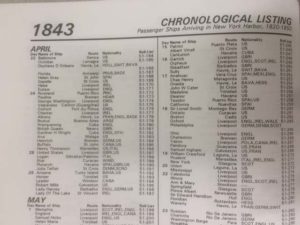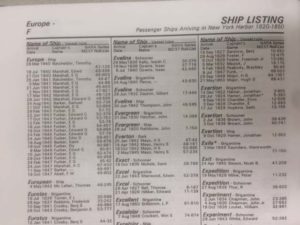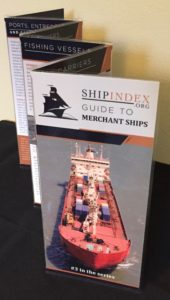We’re now moving to adding a bunch of online content. Here’s a list of online (and some print) resources that have been added in the past three weeks:
- Census of Traditional and Historical Boats of the Mediterranean. Barcelona: Association of Mediterranean Maritime Museums, 2014.
- ssMaritime.com. ssMaritime.com, 2019.
- Fish Tugs of the Greatest Lake: Bayfield, Wisconsin. 2002 – 2016.
- Documents Relating to Law and Custom of the Sea, Vol. II: A.D. 1649-1767 (Navy Records Society, Vol. 50). London: Navy Records Society, 1916.
- Inventory of the Logbooks and Journals in the G.W. Blunt White Library (G.W. Blunt Library No. 4). Mystic, Conn.: Marine Historical Association for the G.W. Blunt Library, 1965.
- Inventory of the Mallory Family Papers 1808 – 1958. Mystic, Conn.: Mystic Seaport Library, Marine Historical Association, Inc., 1964.
- UK Diving: Wreck List. Personal Print Ltd, 2006?.
-
Auke Visser’s International Super Tankers : Oil Bulk Ore Vessels. Auke Visser’s International Super Tankers, 2017.
-
Auke Visser’s International Super Tankers: Floating Platform and Storage Offshore Units. Auke Visser’s International Super Tankers, 2017.
-
Auke Visser’s International Super Tankers: Gas Carriers. Auke Visser’s International Super Tankers, 2017.
-
Auke Visser’s International Super Tankers: Ultra Large Crude Carriers (ULCC) . Auke Visser’s International Super Tankers, 2017.
-
Auke Visser’s International Super Tankers: Very Large Crude Carriers (VLCC). Auke Visser’s International Super Tankers, 2017.
- The Medusa Trust: Preserving Medusa for Future Generations. Elstead, Surrey, UK: The Medusa Trust.
We also updated an online site that moved; unfortunately, this happens often. We don’t always hear about these URL changes, so if you see something that doesn’t work, please do let us know. And if you know of some other online resources that should be added to ShipIndex.org, so people know they mention specific ships, please let us know at comments (at) shipindex (dot) org.



